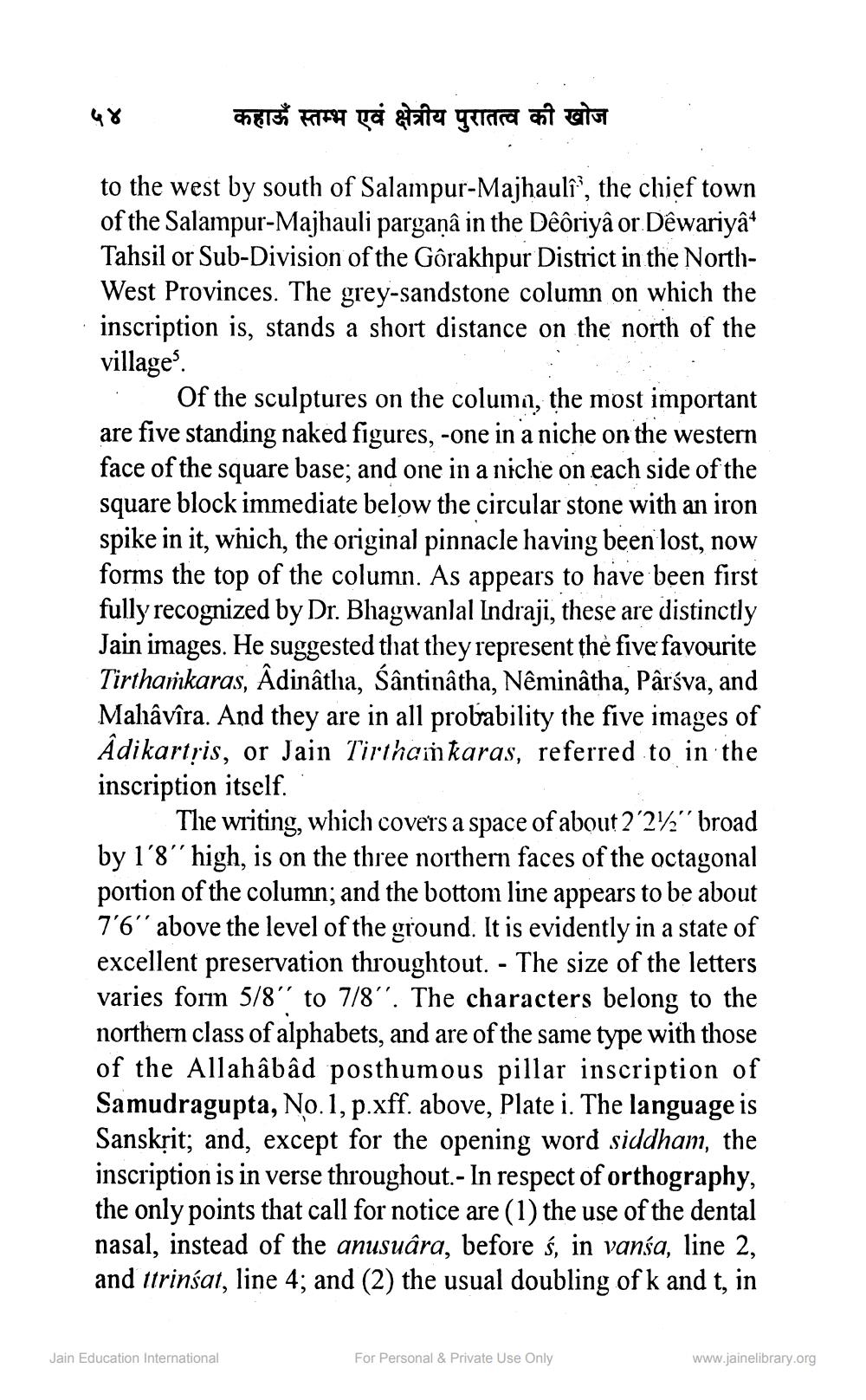________________
५४
कहाऊँ स्तम्भ एवं क्षेत्रीय पुरातत्व की खोज
to the west by south of Salampur-Majhauli?, the chief town of the Salampur-Majhauli parganâ in the Dêôriyâor. Dêwariyat Tahsil or Sub-Division of the Gôrakhpur District in the NorthWest Provinces. The grey-sandstone column on which the inscription is, stands a short distance on the north of the village.
Of the sculptures on the columa, the most important are five standing naked figures, -one in a niche on the western face of the square base; and one in a niche on each side of the square block immediate below the circular stone with an iron spike in it, which, the original pinnacle having been lost, now forms the top of the column. As appears to have been first fully recognized by Dr. Bhagwanlal Indraji, these are distinctly Jain images. He suggested that they represent the five favourite Tirthamkaras, Adinatha, Sântinâtha, Nêminâtha, Pârśva, and Mahâvîra. And they are in all probability the five images of Âdikartris, or Jain Tirtham karas, referred to in the inscription itself.
The writing, which covers a space of about 2'222" broad by 1'8'' high, is on the three northern faces of the octagonal portion of the column; and the bottom line appears to be about 7'6'' above the level of the ground. It is evidently in a state of excellent preservation throughtout. - The size of the letters varies form 5/8" to 7/8". The characters belong to the northern class of alphabets, and are of the same type with those of the Allahâbâd posthumous pillar inscription of Samudragupta, No.1, p.xff. above, Plate i. The language is Sanskrit; and, except for the opening word siddham, the inscription is in verse throughout.- In respect of orthography, the only points that call for notice are (1) the use of the dental nasal, instead of the anusuára, before s, in vansa, line 2, and itrinsat, line 4; and (2) the usual doubling of k and t, in
Jain Education International
For Personal & Private Use Only
www.jainelibrary.org




